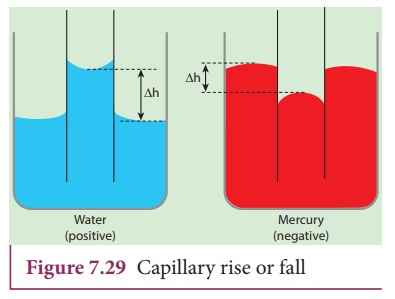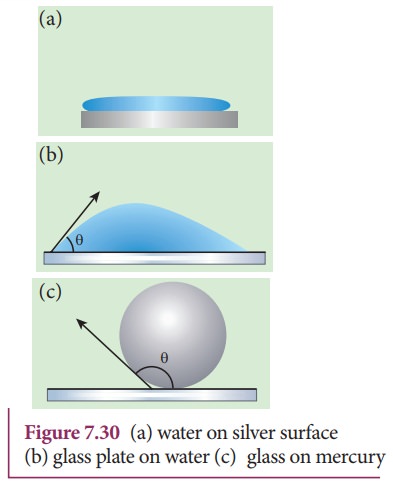Properties of Matter - Capillarity | 11th Physics : UNIT 7 : Properties of Matter
Chapter: 11th Physics : UNIT 7 : Properties of Matter
Capillarity
Capillarity
The
word ‘capilla’ means hair in Latin. If the tubes were hair thin, then the rise
would be very large. It means that the tube having a very small diameter is
called a ‘capillary tube’. When a glass capillary tube open at both ends is
dipped vertically in water, the water in the tube will rise above the level of
water in the vessel. In case of mercury, the liquid is depressed in the tube
below the level of mercury in the vessel (shown in Figure 7.29). In a liquid
whose angle of contact with solid is less than 90°, suffers capillary rise. On
the other hand, in a liquid whose angle of contact is greater than 90°, suffers
capillary fall (Table 7.4). The rise or fall of a liquid in a narrow tube is
called capillarity or capillary action. Depending on the diameter of the
capillary tube, liquid rises or falls to different heights.



Practical applications of capillarity
•  Due to capillary action, oil rises
in the cotton within an earthen lamp. Likewise, sap rises from the
roots of a plant to its leaves and branches.
•  Absorption of ink by a blotting
paper
•  Capillary action is also essential
for the tear fluid from the eye to drain constantly.
•  Cotton dresses are preferred in
summer because cotton dresses have fine pores which act as
capillaries for sweat.
Related Topics